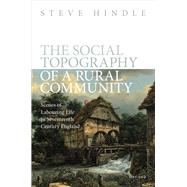The Social Topography of a Rural Community is a micro-history of an exceptionally well-documented seventeenth-century English village: Chilvers Coton in north-eastern Warwickshire. Drawing on a rich archive of sources, including an occupational census, detailed estate maps, account books, private journals, and hundreds of deeds and wills, and employing a novel micro-spatial methodology, it reconstructs the life experience of some 780 inhabitants spread across 176 households. This offers a unique opportunity to visualize members of an English rural community as they responded to, and in turn initiated, changes in social and economic activity, making their own history on their own terms. In so doing the book brings to the fore the social, economic, and spatial lives of people who have been marginalized from conventional historical discourse, and offers an unusual level of detail relating to the spatial and demographic details of local life.
Each of the substantive chapters focuses on the contributions and experiences of a particular household in the parish-the mill, the vicarage, the alehouse, the blacksmith's forge, the hovels of the labourers and coalminers, the cottages of the nail-smiths and ribbon-weavers, the farms of the yeomen and craftsmen, and the manor house of Arbury Hall itself-locating them precisely on specific sites in the landscape and the built environment; and sketching the evolving 'taskscapes' in which the inhabitants dwelled. A novel contribution to spatial history, as well as early modern material, social and economic history more generally, this study represents a highly original analysis of the significance of place, space, and flow in the history of English rural communities.








